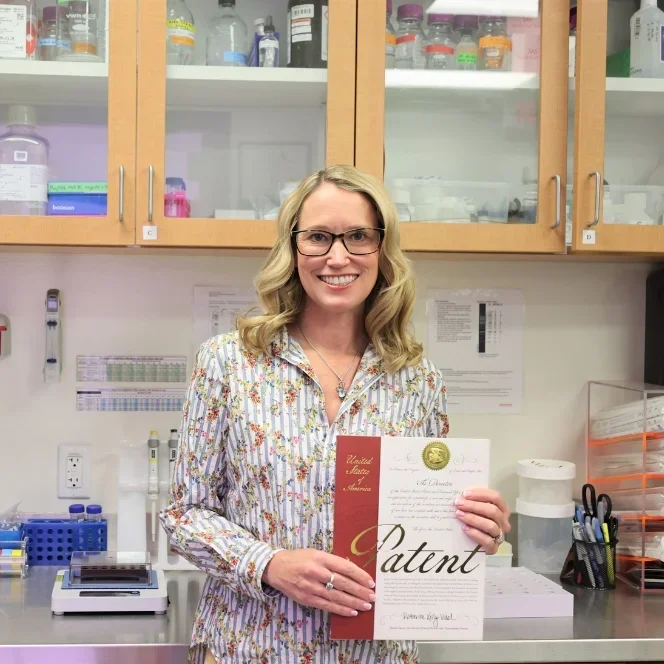
Choosing a career in research demands a Sisyphean commitment – balancing persistence through setbacks with the strength of a supportive community. For Boise State researcher Stephanie Hudon, this journey led to an invention with far-reaching implications: a universal telomere assay that will transform how researchers measure stress over animal lifespans.
Telomeres, protective caps at the ends of chromosomes, shorten under stress. While scientists have studied telomere length as a biomarker for years, traditional methods were species-specific, limiting their use across the animal kingdom. Hudon saw an opportunity to change that.
During her doctorate studies at Boise State, Hudon faced a conundrum while working with a new species. Current published approaches to measuring telomeres worked only on individual species, creating inefficiencies and limiting broader ecological insights. With guidance from her mentor and principal investigator, Eric Hayden, Hudon took on the challenge of developing a standardized test. Her work resulted in a universal telomere assay designed to function across the Tree of Life, allowing researchers to measure telomeres consistently in species ranging from birds to mammals.
“It was rewarding to see the idea work,” Hudon shared, reflecting on the process that spanned three years. Her breakthrough required not only technical ingenuity but also collaboration and determination. She credits her success to the support of graduate and undergraduate student helpers, those who donated samples for testing, and her family – particularly her husband, who encouraged her through sleepless nights with a newborn while she conducted lab work.
The universal assay opens doors for conservation scientists seeking to understand how environmental stress affects animal populations. Hudon’s invention simplifies comparisons across species and ecosystems, enabling researchers to pinpoint populations at risk and guide conservation efforts more effectively.
Hudon’s work culminated in a patent facilitated by Boise State’s Office of Technology Transfer. She hopes to one day package her assay into an easy-to-use kit, making it more accessible to researchers around the world. Her advice to others pursuing ambitious projects? Document every step, embrace setbacks as learning opportunities and lean on your community of mentors and collaborators.
“This type of work can often feel overwhelming. There were times I felt I hit a wall. But I kept moving forward because I believed the idea mattered. Without the support of my husband and everyone involved, I couldn’t have pursued this vision.” –Stephanie Hudon
Hudon’s story exemplifies how individual determination, paired with a strong network of support, can yield extraordinary outcomes. Her assay isn’t just a win for research – it’s a testament to what’s possible when innovation meets perseverance.
This article references US Patent No. 12,116,630, with inventors mentioned: Stephanie Hudon, Steven Burden, Eric Hayden and Esteban Palencia Hurtado.